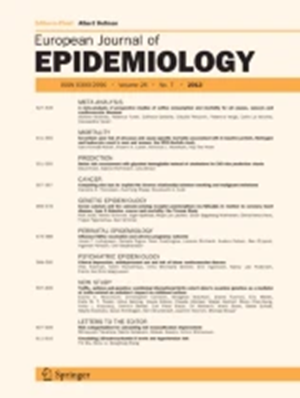基于登记的肥胖研究中可能存在的选择偏倚。
IF 5.9
1区 医学
Q1 PUBLIC, ENVIRONMENTAL & OCCUPATIONAL HEALTH
引用次数: 0
摘要
一些关于肥胖治疗的研究使用了来自真实世界的控制组,这可能与普通人群中的肥胖人群不同。我们评估了这样的对照组是否会影响结果。SOS研究调查了减肥手术后的长期死亡率。在肥胖志愿者中,2007人接受了手术,而对照组的2040人通过18个变量进行匹配。年龄37 ~ 60岁,男性BMI≥34/≥38 kg/m2。在纳入研究之前,我们将对照组细分为在瑞典国家患者登记册中诊断为肥胖的患者(n = 177)和未诊断为肥胖的患者(n = 1863)。死亡率的测定中位随访期为26年。既往肥胖诊断的对照组的死亡率高于无既往肥胖诊断的对照组,分别为每1000人年19.7例(95% CI, 15.5-25.1)和14.4例(95% CI, 13.3-15.7)死亡。这对应的风险比为1.45 (95% CI, 1.12-1.89;P = 0.005),预期寿命缩短3.4年。这些结果在另一个队列中得到证实(n = 2,759, HR = 1.82) [95% CI, 1.47-2.25;P <0.001],预期寿命缩短6.1年)。从真实世界数据集确定的肥胖对照组可能比那些自愿参加临床研究的人健康状况更差。因此,选择偏倚可能导致在研究中对肥胖治疗的生存益处的高估,这些研究使用的是先前肥胖诊断确定的对照组。本文章由计算机程序翻译,如有差异,请以英文原文为准。
Possible selection bias in register-based obesity studies.
Some studies of obesity treatments use control groups identified from real-world registers, which may differ from people with obesity in the general population. We evaluated whether such control groups affect the results. The SOS study examines long-term mortality post-bariatric surgery. Among volunteers with obesity, 2,007 individuals underwent surgery, while a control group of 2,040 individuals was matched using 18 variables. Age was 37-60 years and BMI was ≥ 34/≥38 kg/m2 for men and women, respectively. We subdivided the control group into those with an obesity diagnosis (n = 177) and those without an obesity diagnosis (n = 1,863) in the Swedish National Patient Register prior to study inclusion. Mortality was determined over a median follow-up period of 26 years. The controls with a prior obesity diagnosis had a higher mortality rate than the controls without a prior obesity diagnosis, with 19.7 (95% CI, 15.5-25.1) and 14.4 (95% CI, 13.3-15.7) deaths per 1000 person-years, respectively. This corresponds to a hazard ratio of 1.45 (95% CI, 1.12-1.89; p = 0.005) and a 3.4-year shorter life expectancy. These results were confirmed in another cohort (n = 2,759, HR = 1.82 [95% CI, 1.47-2.25; p<0.001] and a 6.1-year shorter life expectancy). Controls with obesity identified from real-world datasets may be in poorer health than those who voluntarily participate in clinical studies. Consequently, selection bias could lead to an overestimation of the survival benefits of obesity treatments in research using controls identified by prior obesity diagnosis.
求助全文
通过发布文献求助,成功后即可免费获取论文全文。
去求助
来源期刊

European Journal of Epidemiology
医学-公共卫生、环境卫生与职业卫生
CiteScore
21.40
自引率
1.50%
发文量
109
审稿时长
6-12 weeks
期刊介绍:
The European Journal of Epidemiology, established in 1985, is a peer-reviewed publication that provides a platform for discussions on epidemiology in its broadest sense. It covers various aspects of epidemiologic research and statistical methods. The journal facilitates communication between researchers, educators, and practitioners in epidemiology, including those in clinical and community medicine. Contributions from diverse fields such as public health, preventive medicine, clinical medicine, health economics, and computational biology and data science, in relation to health and disease, are encouraged. While accepting submissions from all over the world, the journal particularly emphasizes European topics relevant to epidemiology. The published articles consist of empirical research findings, developments in methodology, and opinion pieces.
 求助内容:
求助内容: 应助结果提醒方式:
应助结果提醒方式:


